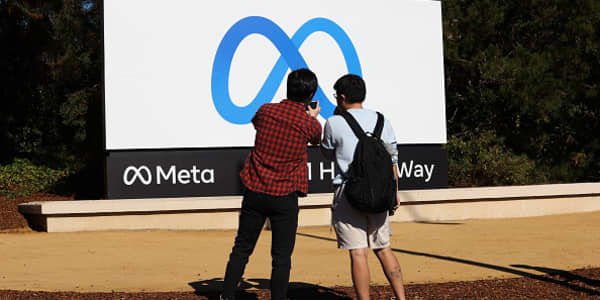When Bonnie Kintzer took the helm at the Reader's Digest Association in 2014, she had her work cut out for her. The behemoth, which began as a magazine in 1922 and grew into a direct-marketing powerhouse, with offices in 45 countries, was going through its second bankruptcy in five years and was on life support, having failed to adapt to advances in technology or recognize the way customers preferred to interact with content.
The upshot: It was struggling with $100 million in debt and hemorrhaging red ink.
At the time, RDA was home to a number of books and video collections; its flagship magazine; DIY lifestyle magazine "The Family Handyman"; and Reiman Publications' "Taste of Home," "Birds & Blooms," "Reminisce," "Country Woman," "Country" and "Farm & Ranch Living."
Yet fewer customers were interested in buying the aging brand's books and other home entertainment offerings, and revenue was declining rapidly, down more than 26% year-over-year.
RDA was not the first publishing company to struggle in the age of technology. With readers and ad dollars swiftly moving toward digital — in 2007 U.S. magazine publishing revenue totaled $49.3 billion; in 2015 it sunk 43%, to $28.3 billion — old-line print media companies universally were fighting for survival.
To stay afloat, Kintzer, the fourth CEO in three years, was presented with a monumental task: to lead a bold rebrand of the company as part of its broader growth strategy to transform the business into a digital-first, multiplatform media company that could prosper.
Fast-forward six years and the brand is now profitable, with the company's print and digital products reaching nearly 1 in every 4 adults in the U.S. What's more, according to Comscore's 2019 rankings, 1 in 3 of the company's digital audience is a millennial, and 27% of millionaire households in America read or visit a Trusted Media brand property.
Out of the red
In 2017, just three years into Kintzer's tenure, the company retired its debt, said a Trusted Media spokesperson in an email to CNBC, adding that from January 2015 to December 2019, total digital revenue grew by 98%, with a compounded annual growth rate of 19% due to Kintzer's rebranding and digital initiatives.
The Reader's Digest Association — renamed Trusted Media Brands to echo its transformative growth into a modern multimedia platform — is reaching more than 60 million consumers monthly across its print and digital platforms and new direct-to-consumer products, such as Family Handyman's DIY University and Taste of Home's Coffee, Cookware and Special Delivery subscription boxes.
Although the private company would not disclose revenue figures (Ripplewood Holdings took RDA private in November 2006 under a definitive merger agreement, acquiring RDA's outstanding common shares at $17 per share and assuming its $800 million debt; the majority stake in the company was subsequently acquired by Golden Tree), it did say it expects a 6% increase in overall revenue in FY20 and 48% growth in digital ad revenue for FY20.
Strategic goals for growth over the next three years include expanding its video creation; growing its Trusted Studios content division; expanding its affiliate e-commerce, newsletter and book programs; and acquiring more digital magazine subscribers.
In September, Trusted Media Brands celebrated a milestone in the company's digital expansion with the launch of its first digital-only brand in beta, TheHealthy.com. The most recent Comscore release showed TheHealthy.com at 2,600,000 monthly uniques. The company plans to launch additional single-subject websites starting in 2020, using RD.com as an incubator for this expansion.
Transforming an iconic brand
Modernizing a then-93-year-old company known primarily for an American general-interest magazine was not easy, said Kintzer. "It was very bleak. Morale was tremendously low. I think there was a loss of pride that they couldn't be successful."
With an aging audience that was dying off, the company had been hemorrhaging profits since 2005 as it tried to shake its stodgy image. To cut its debt by 75%, Reader's Digest began laying off its U.S. staff, selling off assets and rapidly extinguishing employee perks. Even the 700,000-sq.-ft. headquarters in Chappaqua, New York, built by the founders Dewitt and Lila Wallace in 1939, had been sold. The Georgian-style brick building, whose halls were once adorned with Monets, Cezannes, Van Goghs and Modiglianis, until the art collection was sold for near-$90 million in 1998 to stem declining profits — is now 64 mixed-income apartments, its sprawling, 116-acre campus a mix of commercial and retail space.
Reader's Digest was in desperate need of a rebrand — fast.
The Harvard MBA was a promising choice to turn the company around: No stranger to the brand, Kintzer had already served a nine-year tenure at Reader's Digest a decade earlier, as general manager of North America and president of U.S. Publishing. Under her tutelage she was responsible for a number of the company's largest publishing and digital properties, including Allrecipes.com and "Every Day with Rachael Ray" (both later sold to Meredith Corp.). In between she served as CEO of Women's Marketing, a media strategy firm serving emerging brands targeting women.
Charting a way out of the company's second Chapter 11, Kintzer was convinced that Reader's Digest still possessed two keys for success: Its products were still strong — "Pick up any 'Reader's Digest' or 'Taste of Home' magazine and it was clear the editors had never lost sight of their audience," said the CEO — and there was a floodtide of unmonetized digital traffic: Unbelievably, full swing into the digital age, the company was publishing just a mere one article a day online.
"We had hundreds of millions of dollars in revenue, millions of paying customers — literally," she said. "Those are really hard things to come by."
This wasn't a start-up, she reasoned, this was a re-start-up.
Rebranding the Reader's Digest image
One of Kintzer's first moves was to rename the company. "Reader's Digest" magazine would always retain its name on newsstands and online. But RD had made a significant acquisition in 2002 when it bought Reiman Publications for $760 million. Its publications — including "Taste of Home," "Country" and "Country Woman" — stood on their own.
"The name should have been changed then," Kintzer said. "Employees had been put in the position of saying, 'Well, we're not really Reader's Digest,' which "kind of denigrates 'Reader's Digest,' so there's no win for anybody to be called Reader's Digest Association," she said.
What each title in the portfolio did have in common was that they were a trusted brand. So the new name was something of a no-brainer: Trusted Media Brands.
Building a strong management team came next. Vince Errico, a consultant with VCs dealing with publishing companies, was familiar with the company's history. Kintzer immediately brought him on board as chief digital officer.
Errico knew Trusted Media Brands had highly recognizable and respected brands, and he saw a lot to leverage in the digital sphere, he said. "They had opportunities that just pure digital-play companies did not have available to them."
Bringing the company into the digital age
His first move: to do an overall digital assessment — front-end content management systems, back-end technology, digital editorial experience, measuring tools. "Did the company know how well they were doing?" he said. He needed to find out.
What he discovered was that all of the websites were on different back- and front-end systems, which made no sense. They were working in silos. Aside from the unnecessary cost of having programmers for each system, there was no way to easily share content and successful widgets and programs across the family of titles. He demanded that the "silos" come down. Everyone had to start speaking the same language, especially given their strict financial parameters.
"We have been on a very short leash," said Errico.
Hand-in-hand with streamlining the technology, Errico started to grow the digital editorial team — he hired over 300 tech-savvy employees over the last three years — as content primarily had been flowing downstream from the magazines to the websites, with magazines producing between 30 to 75 articles a month.
"In the digital world, that is just not enough content to keep up with what I call the velocity of the life of digital content," he said.
They needed more digital metrics-savvy editors, the kind who understands the metrics of search-engine optimization and social media in all the channels that brought readers to their sites — and know how to use it to shape content.
In all, Errico said it took about a year for those two efforts — the new technology and the editors crafting a critical mass of content — to converge, and the result "was powerful."
"We saw significant growth that continued beyond that as well," he said.
Year-over-year data starting in Sept. 2017, then Sept. 2018 and Sept. 2019 show a 30% continuous annual growth rate in monthly unique visitors across Trusted Media Brands' websites.
"We're probably one of the fastest-growing re-start-ups in old-school print media, for sure," Errico said.
We're probably one of the fastest-growing re-start-ups in old-school print media, for sure.Vince Erricochief digital officer, Trusted Media Brands
The digital side also brought in a digital audience development team to improve their audience strategy by analyzing their online behavior.
The system of flowing content from print to digital also got a major overhaul. Digital editors now work alongside print editors to create the largest body of content possible. They then decide which pieces will go into the magazine rather than vice versa. As a result, each website is now generating between 500 and 800 pieces a month
According to Senior Editor Jody L. Rohlena, the marriage between print and digital is paying off: Reader Digest's online feature "Nicest Places in America," now in its fourth year, won a Folio Eddie Award in 2018, recognizing "excellence in uncompromising journalism and gorgeous design across all sectors of the publishing industry," according to Folio's website.
"The synergy here is what makes it all work," Rohlena said. "We try to feed off each other, print and digital, as much as we can." This year the magazine's "Nicest Places in America" editors teamed up with Nextdoor, the social network that helps neighbors around the world build real-world connections, stay informed and lend a helping hand to neighbors in need.
'We finally reached that place, that plateau'
The CEO said their main objective is to put all related content under one roof. "If you know how Google's algorithms work, it's very important for health to be in its own health site," she said. "Google doesn't like to see general interest mixed with health."
Errico says it has been a major cultural transformation for the company, as it would be for any print media company. Re-platforming, restaffing and standardizing advertising opportunities all have fueled revenue growth.
He refers to what they are now as "a minimally viable product." The websites are clicking away, recognized by consumers and offering the kind of new content, speed of upload and interactivity people expect from a media company.
"We finally reached that place, that plateau, if you will," he said. "It's a very strong foundation. Our next steps are to iterate from here and start to build out new features and functionalities that we know our users want."
Kintzer noted that about a third of their online audience are millennials and called it exciting "to be introducing the brands to so many young people who might not pick up a magazine."
More from Technology Executive Council:
Estée Lauder: 4 lessons learned by an iconic brand about consumers in digital era
The hacker behind your company's data breach may be sitting right in the next cubicle







